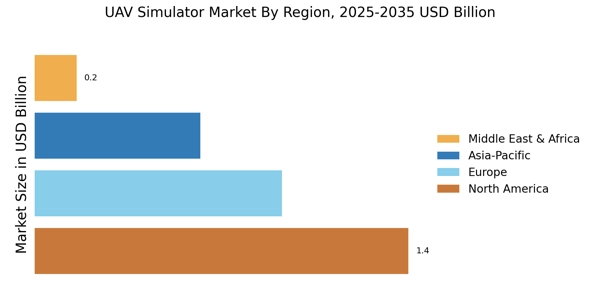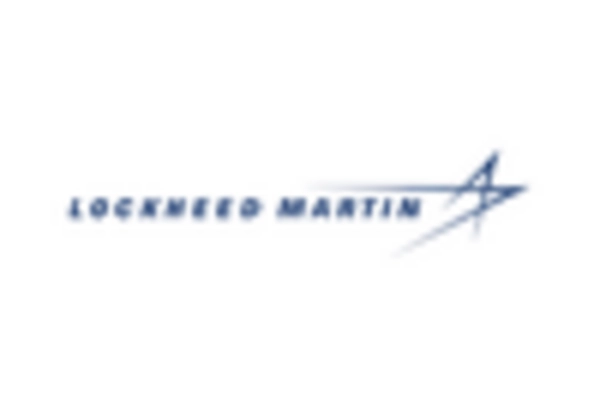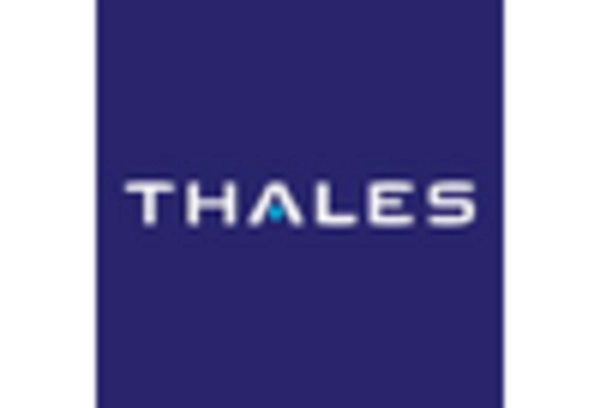Expansion of Commercial Applications
The UAV Simulator Market is benefiting from the expansion of commercial applications across various sectors, including agriculture, logistics, and infrastructure inspection. As businesses increasingly adopt UAV technology for operational efficiency, the need for specialized training solutions becomes paramount. Market analysis indicates that the commercial UAV sector is expected to grow substantially, with an estimated market size reaching several billion dollars by 2026. This growth is likely to drive demand for UAV simulators that cater to specific industry needs, allowing operators to gain practical experience in a controlled environment. Consequently, the expansion of commercial applications is a key driver for the UAV simulator market, fostering innovation and development in training solutions.
Increased Demand for Training Solutions
The UAV Simulator Market is witnessing a surge in demand for training solutions, driven by the need for skilled operators in various sectors, including military, commercial, and recreational applications. As UAV technology becomes more prevalent, organizations are recognizing the importance of effective training programs to ensure safety and operational efficiency. The market data suggests that the demand for UAV training solutions is expected to rise significantly, with a projected increase in simulator usage by over 30% in the next few years. This trend highlights the necessity for comprehensive training methodologies that can be effectively delivered through advanced simulation technologies, thereby enhancing the overall competency of UAV operators.
Growing Investment in Defense and Security
The UAV Simulator Market is experiencing growth due to increasing investments in defense and security sectors. Governments and military organizations are recognizing the strategic advantages of UAV technology, leading to heightened funding for research and development. This investment is not only aimed at enhancing UAV capabilities but also at improving training methodologies through advanced simulation tools. Market Research Future reveal that defense budgets are allocating a significant portion to simulation technologies, with projections indicating a rise in spending on UAV training solutions by over 20% in the coming years. This trend underscores the importance of effective training in maintaining operational readiness and effectiveness in defense applications.
Regulatory Compliance and Safety Standards
The UAV Simulator Market is significantly influenced by the need for regulatory compliance and adherence to safety standards. As UAV operations become more regulated, organizations are compelled to ensure that their operators are adequately trained to meet these requirements. This has led to an increased reliance on simulators as a cost-effective means of training personnel while minimizing risks associated with real-world operations. Data indicates that regulatory bodies are increasingly mandating simulator training as part of certification processes, which is likely to bolster the UAV simulator market. The emphasis on safety and compliance is thus a critical driver, shaping the development and adoption of UAV simulation technologies.
Technological Advancements in UAV Simulator Market
The UAV Simulator Market is experiencing rapid technological advancements that enhance the realism and effectiveness of training programs. Innovations in virtual reality (VR) and augmented reality (AR) are being integrated into simulators, providing immersive experiences that closely mimic real-world scenarios. This trend is supported by the increasing capabilities of computing power and graphics technology, which allow for more detailed simulations. According to recent data, the market for UAV simulators is projected to grow at a compound annual growth rate (CAGR) of approximately 15% over the next five years. This growth is indicative of the industry's response to the demand for more sophisticated training tools that can accommodate the complexities of modern UAV operations.


















Leave a Comment